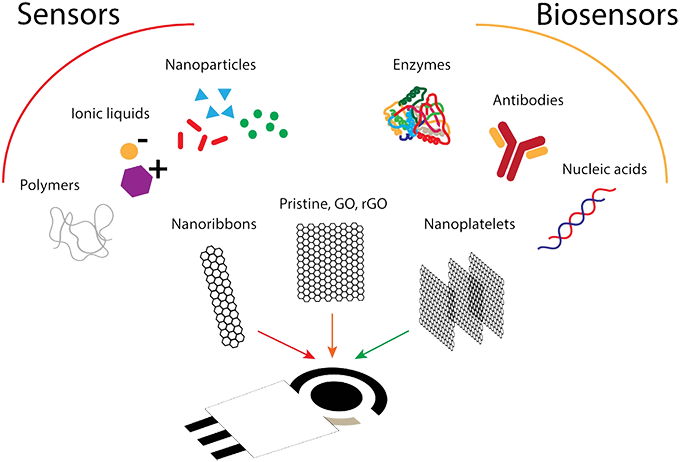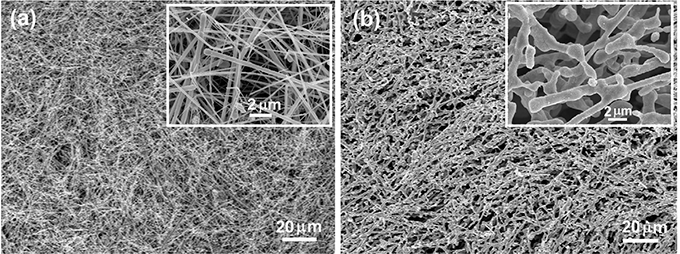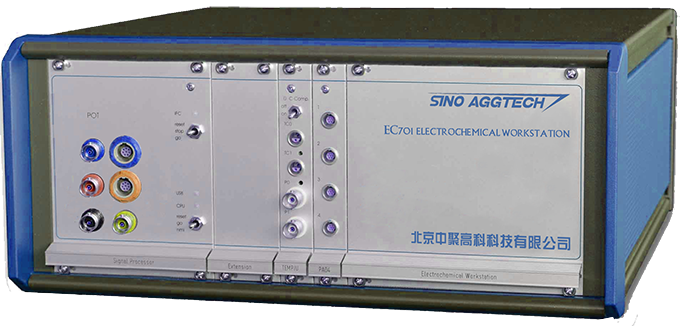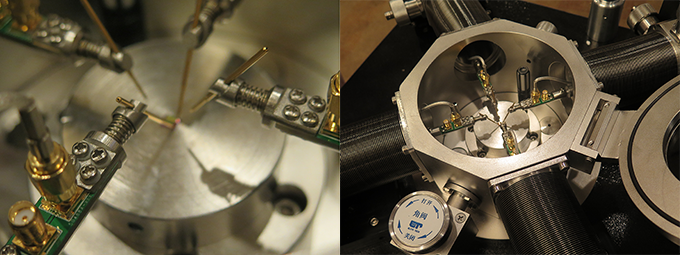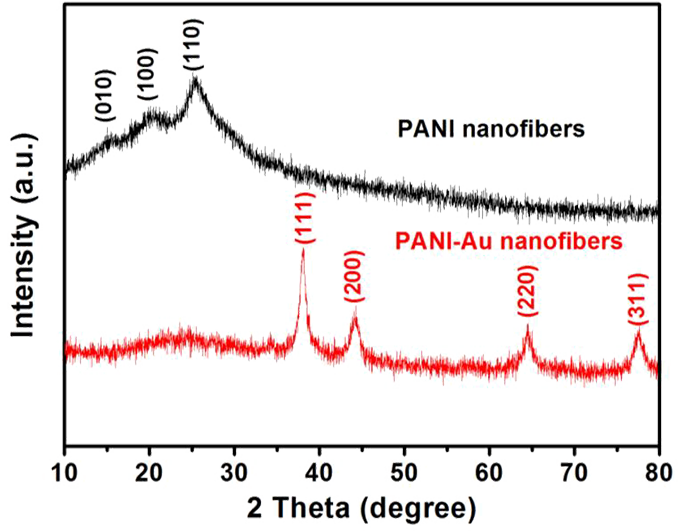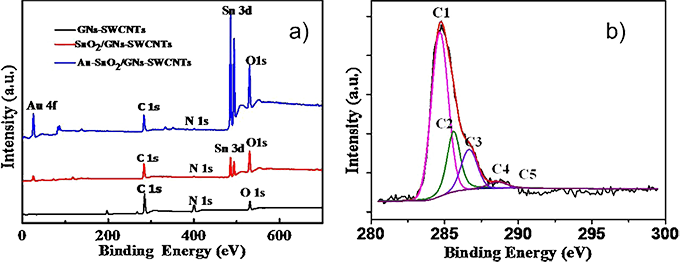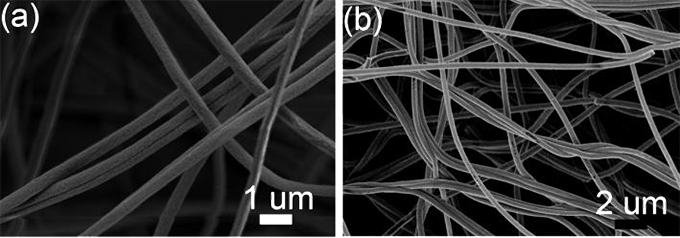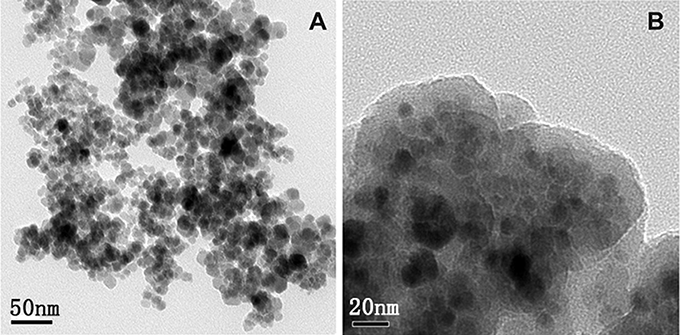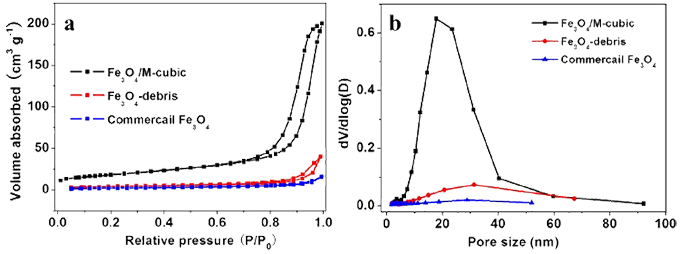Research background
Electrochemical sensor refers to a sensor based on the electrochemical properties of the object to be measured and converts the chemical quantity of the object to be measured into an electrical quantity for sensing and detection. It usually consists of three parts: (1) the identification part of alien species; (2) The reporting part where the sensor transmits the information after receiving the alien species; (3) Trunk part. The part of the reporter is an electroactive center. After the detected substance interacts with the sensor molecule, the electroactive center is affected, causing the change of its oxidation-reducing properties. Electrochemical identification is performed by displaying the REDOX potential of the sensor molecules. A typical electrochemical sensor consists of a sensing electrode (or working electrode) and a reverse electrode, separated by a thin electrolytic layer. Through a resistor connected between the electrodes, a current proportional to the measured gas concentration flows between the positive and negative electrodes. The gas concentration can be determined by measuring this current. Because of the current generated in this process, electrochemical sensors are often referred to as current gas sensors or micro-fuel cells. The research of electrochemical sensors focuses on materials, and the research of nanomaterials is a hot spot today.
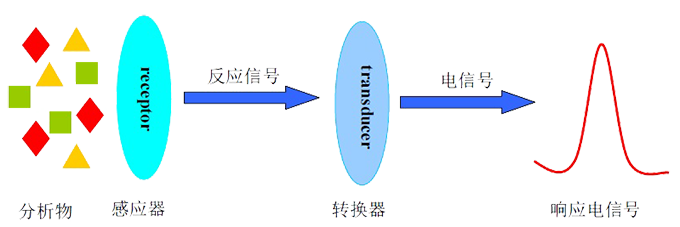
The sensor part of the electrochemical sensor is the electrode, which is generally a three-electrode system, including the working electrode, the opposite electrode and the reference electrode. The working electrode is equipped with a sensitive element and a conversion element, which can convert the concentration change of the substance to be measured into an electrical signal. When the object to be measured is combined with the sensitive element of the sensor, it will react and produce the corresponding chemical or biological information, and the conversion element will convert it into an electrical signal, which is processed by the electrochemical detector and sent to the computer for display. Therefore, the electrode is the focus of the entire electrochemical sensor, and it is also the key to electrochemical analysis and detection. Because of the different roles they play in the sensor, the working electrode is the core element of the entire electrochemical sensor, and its performance determines the performance of the electrochemical sensor.
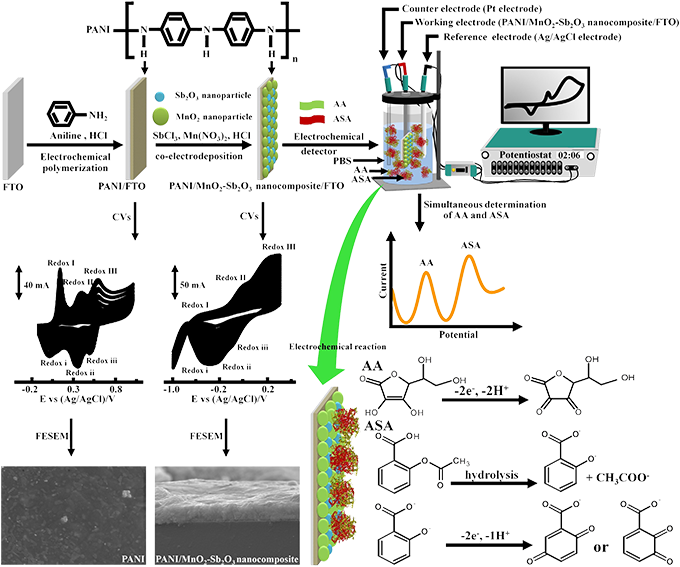
Canonical study
The research of electrochemical sensor has two aspects: device and electrode material. The devices are mostly based on gas sensors (CO sensors and NO2 sensors, etc.). Nanomaterials have different properties from the main material, such as small size effect, surface interface effect and quantum size effect, and have been widely used in the fixing and signal detection and amplification of enzymes, proteins and other biomolecules. At present, the construction of novel and highly sensitive electrochemical biosensors based on nanomaterials is becoming a research hotspot in the field of sensors, and has been widely concerned by the scientific community.
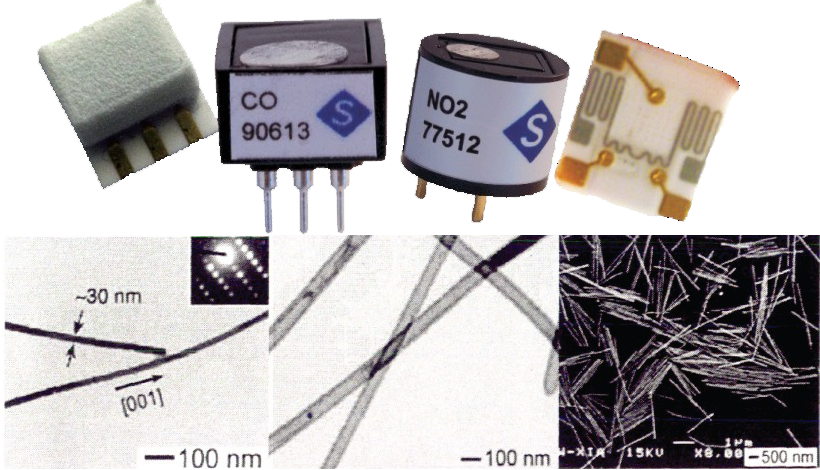
Carbon nanomaterials: Carbon materials have excellent conductivity, large specific surface area, high chemical stability and nanometer size effect, which have broad prospects in the application of electrochemical sensors. Due to its special structure and properties, graphene composites show great potential in many aspects, such as applications in nanobiomaterials, sensors, capacitors, superconductors and catalyst carriers, as well as nanocomposites.
Metal nanomaterials mainly refer to precious metal nanomaterials (nano gold, nano silver, nano platinum, nano palladium, nano ruthenium, etc.) and copper, iron, cobalt, nickel, zinc and other nanomaterials and their alloys. Metal nanomaterials have good electrical conductivity, strong stability, good biocompatibility, low cytotoxicity and unique properties of light, electricity and magnetism brought by size and shape.
Metal oxide nanomaterials are excellent materials for sensor preparation because of their high specific surface area, good biocompatibility, high chemical stability, low preparation cost and good electrical properties. Such materials are mainly metal oxides (TiO2, CuO, Fe3O4, ZnO).
Equipment recommendation
The EC701E electrochemical sensor analysis system is used to measure the current or potential change. The use of AES-4TH to control the environment of the test system can avoid the interference of external environment (temperature, humidity, etc.) to the system, and improve the repeatability of the measurement.
1. Measuring equipment
EC701E electrochemical sensor analysis system: provides current-potential analysis, potential-time analysis, impedance analysis, etc. The equipment has stable performance and high measurement accuracy.
2. Environmental control equipment
Temperature and humidity test platform: to build a temperature, humidity, pressure, atmosphere controlled test environment for material or device research, the system is equipped with precision measurement module, can be used to measure resistance, voltage, current signals, to comprehensively characterize the electrical signal changes of materials, through the overall circuit, line, cavity shielding anti-interference processing, to achieve very low signal stability test. The equipment is used to provide a stable working environment for the test environment and ensure the repeatability of the experiment.
3. Accessories consumables: electrochemical sensor accessories, electrodes and electrolytic cells, etc.
Typical result
Cyclic voltammetry (CV) : The excitation potential is applied to the polarized pool in a fast linear scan. The excitation signal of cyclic voltammetry is an isosceles triangle wave potential. From the initial potential, the potential changes linearly in a certain direction to the termination potential, and immediately reverses back to the initial potential. Without a stop command, the process is repeated. The cyclic voltammetry curve obtained by triangular pulse voltage consists of two parts, the upper part is divided into reduction wave formed by oxidation state reduction of electroactive substance, which is called reduction branch or cathode branch. The lower part is divided into oxidation waves formed by oxidation of reduction reaction products, called oxidation branches or anode branches. Cyclic voltammetry can directly measure the ratio of anode peak current to cathode peak current and the difference between anode peak potential and cathode peak potential. Cyclic voltammetry is mainly used to study the basic theories of electrochemistry such as electrode process and electrode adsorption.
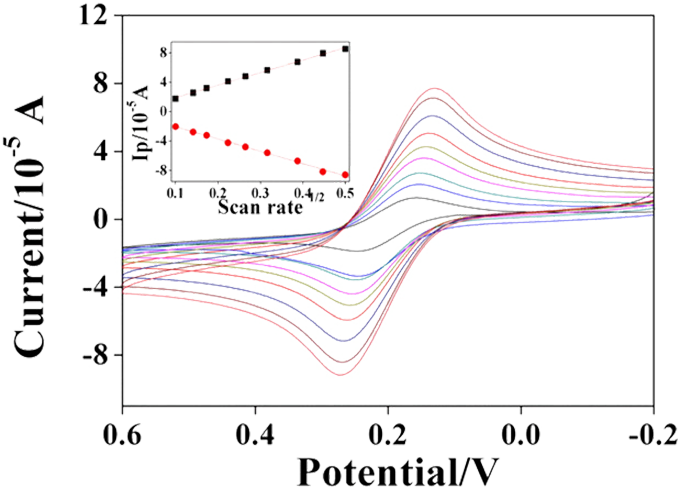
Linear sweep voltammetry (LSV) : A linear voltammetry technique that scans from the starting potential at a certain rate to the final potential. Different from the stepped linear sweep voltammetry, the linear sweep voltammetry is based on the set scanning range and scanning rate, and the step size is automatically set to the minimum value as far as possible to obtain an effect close to the gradient of the simulated amount. When the excitation potential is applied to the working electrode in linear scanning mode, the scanning process is equivalent to half a cycle of cyclic voltammetry. The linear scan from the start potential to the end potential is terminated.
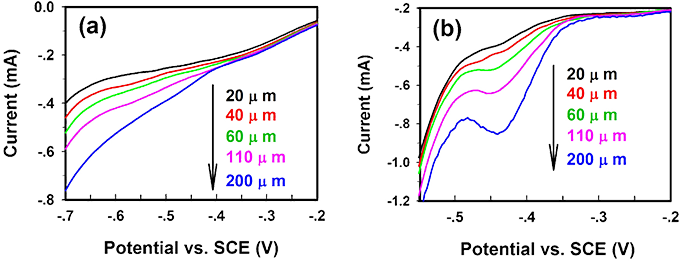
The ampere i-t method is an important method for measuring the change of current density over time at a certain potential. The measurement curve can evaluate the activity and stability of the material, which is very important for the investigation of practical application properties. In the oxidation process, the magnitude and attenuation of the oxidation current can be seen from the height and change rate of the curve, thus inferring the stability of the material.
The relationship between current and concentration is established by adding different concentrations of solution under constant voltage to the current time curve.
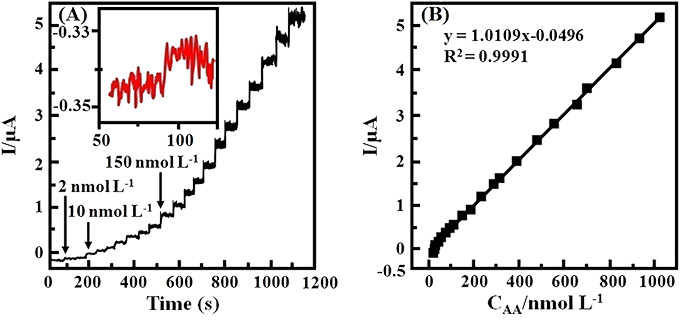
Differential Pulse Voltammetric (DPV) : A constant amplitude pulse potential is applied to a linearly increased scanning potential, and its electrode potential changes with time. During the scanning process, the basic potential is scanned from the initial potential to the termination potential. Current sampling is performed before and at the end of the potential pulse. The difference between these two sampled currents is recorded as a potential function. Before and at the end of each pulse, two currents are measured, the difference between the two currents is recorded, and the potential is mapped with the current difference to obtain the differential pulse voltammetry curve. The curve is peak-shaped, and peak current and peak potential are two important parameters. For reversible systems, the peak shape of differential pulse voltammetry curve is symmetrical, and the peak current is proportional to the measured substance concentration. Before the pulse is applied, only the charging current exists, and the measured current value at the end of the pulse is the sum of electrolytic current and charging current, and the interference of background charging current can be eliminated by subtracting the two currents before and after. Therefore, compared with cyclic voltammetry, differential pulse voltammetry is more sensitive in detection, especially in the detection of trace substances, differential pulse voltammetry has particularly significant advantages. Differential pulse voltammetry has been widely used in the field of analysis because of its high sensitivity and excellent detection limit.
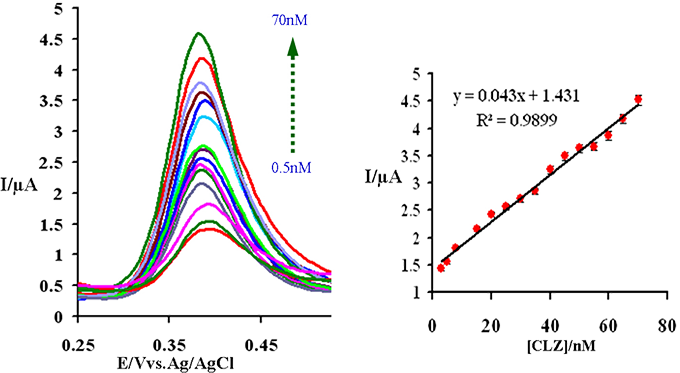
Chronoamperometry (CA) : An electrochemical analysis method and technique for studying the dynamics of electrode processes at ometry; The sudden application of a constant potential on the electrolytic pool is enough to oxidize or reduce a certain electroactive substance (or depolarizer) in the solution, record the change of current and time, and obtain the current-time curve. The relationship between current and concentration is established through the curve of the relationship between current and time of different concentration substances.
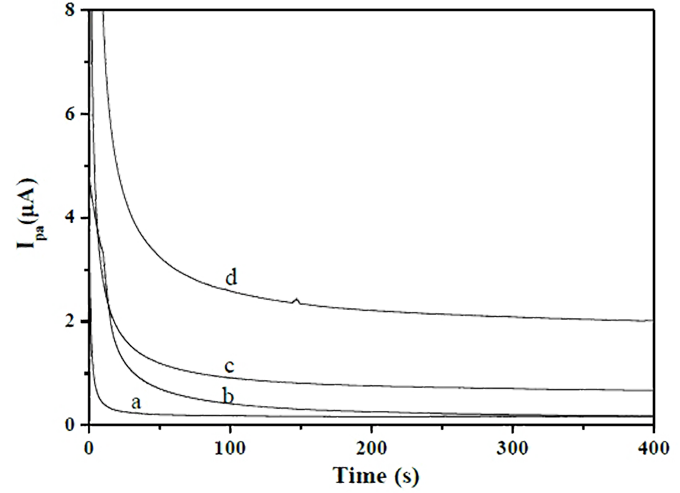
Square Wave Voltammetry (SWV) : On the basis of the step linear scan, a series of forward and reverse pulse signals (both of which have the same duration and are applied at a specific frequency) are superimposed, the difference △I of the late forward pulse and the late reverse pulse currents is recorded, and the voltammetry of the step scan potential is analyzed according to the current difference. The voltammetry pattern is symmetrical and can be analyzed qualitatively and quantitatively according to its peak potential and current.
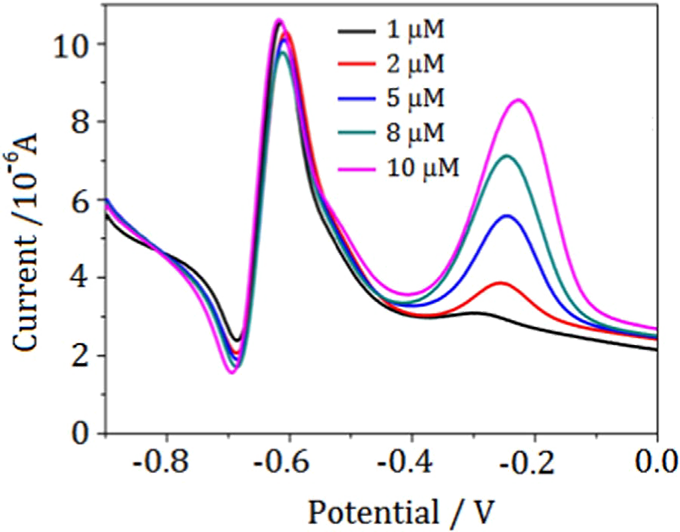
Ac impedance test (EIS) : The electrochemical AC impedance method is to disturb the electrolytic cell with a small amplitude AC signal, and observe the system to follow the disturbance in the steady state. Ac impedance method has become an important means to study electrode process dynamics and electrode interface phenomena. The AC impedance method uses the measured impedance spectrum in a wide frequency range to study the electrode system. From the AC impedance data obtained, the impedance characteristics and kinetic properties of the electrode structure in the electrochemical process can be analyzed according to the simulated equivalent circuit of the electrode, such as the equivalent series capacitance and charge transfer resistance, etc., and the corresponding electrode reaction parameters can be calculated. Therefore, more dynamic information and more information about the interface structure can be obtained than other conventional electrochemical methods, and it has been widely used in the characterization of electrode surface modification layers.
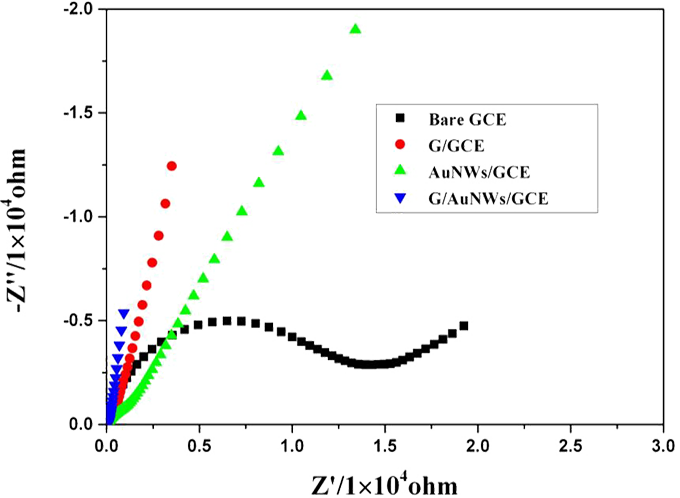
XRD: mainly analyzes the types and crystal types of elements in the material, and calculates the average particle size and lattice constant of the material.
XPS: The characteristic binding energy of electrons in atoms is used for surface composition analysis, chemical state analysis and in-depth analysis of elemental composition of the sample.
Scanning electron microscope (SEM) : It is a kind of microscopic morphology observation instrument between transmission electron microscope and optical microscope measurement scale, which can directly use the material properties of the surface materials of the sample for microscopic imaging, mainly used for the surface morphology characterization of the sample.
Transmission electron microscopy (TEM) : Mainly used to observe the morphology, particle size and dispersion of material particles, is a more commonly used means of microscopic characterization.
N2 adsorption desorption: The specific surface area and pore size distribution of the material are mainly obtained.
reference
S.H. Fan, Y. Zhu, R.R. Liu, H. Zhang, Z.S Wang, H. Wu, A Porphyrin Derivative for the Fabrication of Highly Stable and Sensitive Electrochemical Sensor and Its Analytical Applications, Sens. Actuators B Chem., 2016, 233, 206-213.
E. Tammari, A. Nezhadali, S. Lotfi, H. Veisi, Fabrication of an Electrochemical Sensor Based on Magnetic Nanocomposite Fe3O4/β-alanine/Pd Modified Glassy Carbon Electrode for Determination of Nanomolar Level of Clozapine in Biological Model and Pharmaceutical Samples, Sens. Actuators B Chem., 2017, 241, 879-886.
X.J. Bo, M. Zhou, L.P. Guo, Electrochemical Sensors and Biosensors Based on Less Aggregated Graphene, Biosens. Bioelectron., 2016, 05, 1-20.
A. Puangjan, S. Chaiyasith, S. Wichitpanya, S. Daengduang, S. Puttota, Electrochemical Sensor Based on PANI/MnO2-Sb2O3 Nanocomposite for Selective Simultaneous Voltammetric Determination of Ascorbic Acid and Acetylsalicylic Acid, J. Electroanal. Chem., 2016, 782, 192-201.



